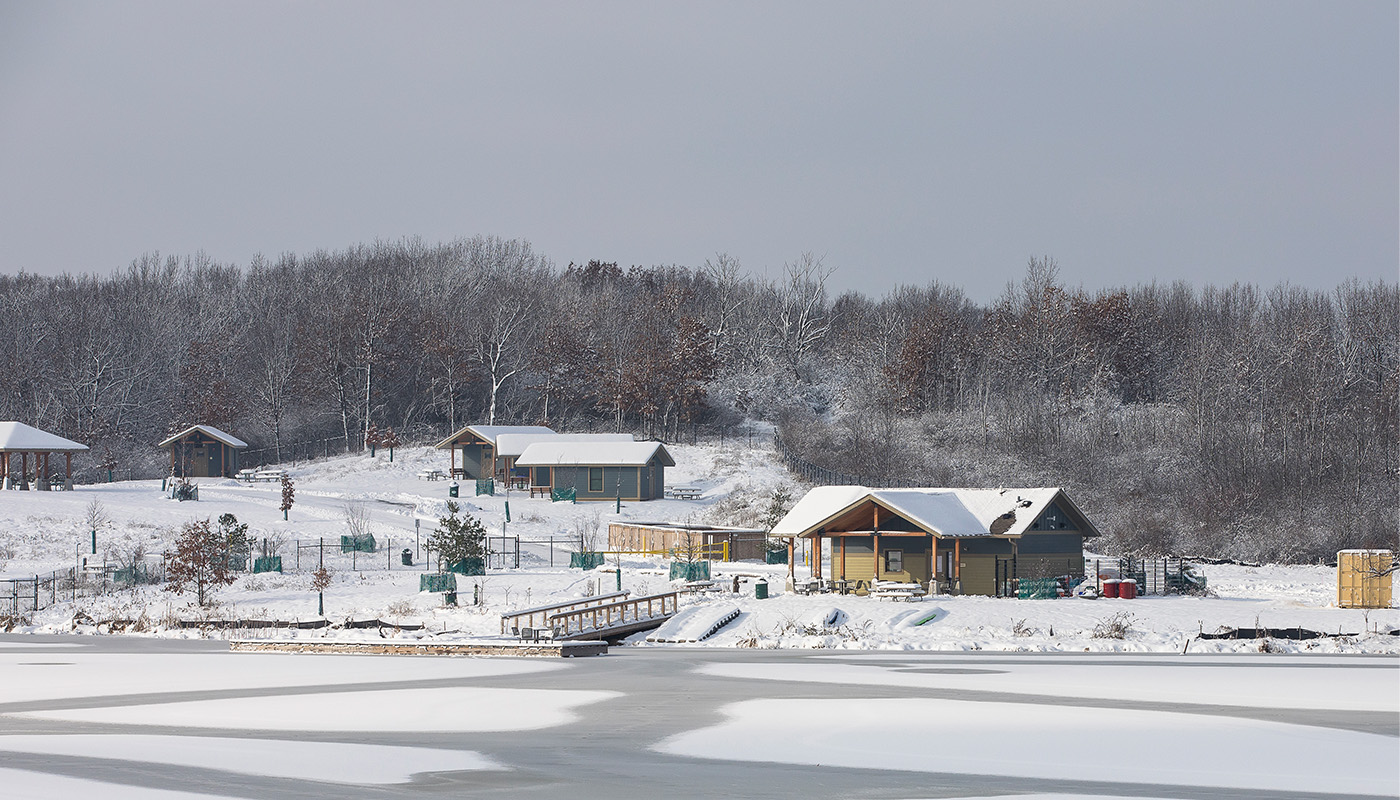As the temperatures drop, a different kind of adventure awaits in the Forest Preserves of Cook County. Winter camping offers a chance to enjoy the great outdoors in a way that many overlook, proving that it is not just a summer activity. While the idea of camping in colder weather may seem intimidating, Forest Preserves Camping Program Coordinator Brian Arnoldt says that with the right preparation, it can be just as enjoyable as in any other season.
“The main thing for winter camping, and it doesn’t matter if you’re spending the day outside or a month outside, is layering,” said Arnoldt. “You need to layer your clothes.”
Starting with a moisture-wicking base layer is crucial.
“People think they’re going to be cold while they’re outdoors doing things in the winter, but they’re going to sweat faster than they would in the fall or early spring with layers on,” Arnoldt explained. “The layers aren’t to keep the cold out, they’re to keep the warmth in.”
When it comes to sleeping, proper insulation is key. Arnoldt recommends using multiple ground pads to prevent heat loss and investing in a sleeping bag with the appropriate lab-tested temperature rating. Also, using a sleeping bag liner will help add 5 to 15 degrees of warmth while wicking away nighttime sweat.
To start the day on a warm note, Arnoldt suggests a simple yet effective trick: “Put base layer garments in the sleeping bag at night. When you wake up, you’ll have toasty warm clothes to wear.”
Staying hydrated is another essential aspect often overlooked in colder climates.
“Dehydration is actually a big factor in the winter,” said Arnoldt. “Because you’re cold, you don’t think about dehydration. Often the air is dryer in the winter, sucking the moisture right out of your body.”
Arnoldt says packing plenty of extra garments is a must and managing moisture inside the tent is also important.
“Do you want to go sledding for three hours and then have nothing to change into? Probably not,” Arnoldt said. “Think about when you’re going to sled, how you’re going to sled, and make sure you bring lots of extra clothes, boots, hats and gloves.” And before settling in, knock off any snow from boots to keep the interior dry.
“Treat winter camping like every other camping trip, but be a little smarter about it,” advised Arnoldt.
Most Forest Preserves campgrounds welcome visitors during the colder months; many offer heated cabins for those who prefer a little added comfort. Learn more at fpdcc.com/camping.

